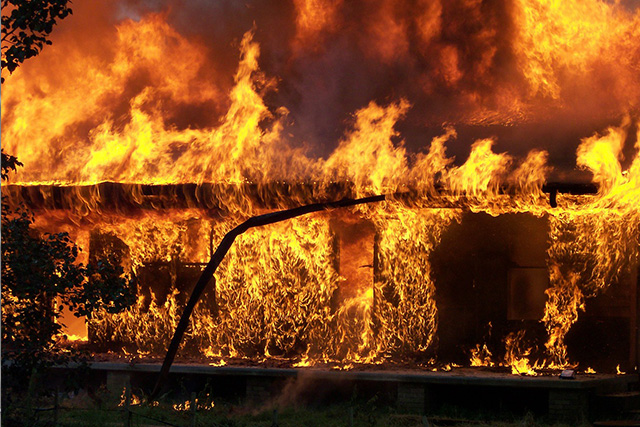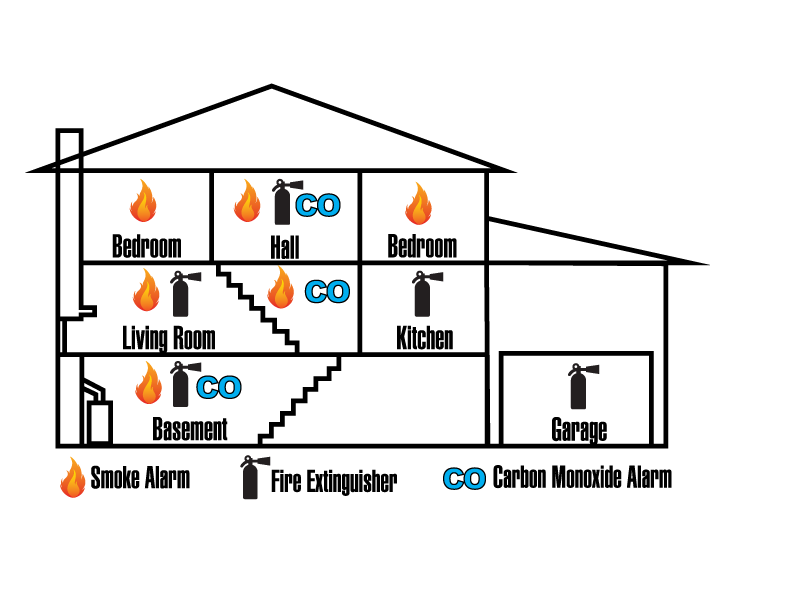Smoke & Fire Safety
(Content Writing for Sutherlands HomeBase, a construction and home improvement chain located in Kansas, Missouri, Texas and Louisiana)

Fires can be very dangerous any time of the year but especially in the winter. Know the following facts to help protect yourself and your loved ones.
Statistics
* 905 people die in winter home fires each year.
* $2,091,000,000 in property loss occurs from winter home fires.
* 67 percent of winter fires occur in one- and two-family homes.
* Cooking is the leading cause of all winter home fires.
* 5 to 8 p.m. is the most common time for winter home fires.
* $2,091,000,000 in property loss occurs from winter home fires.
* 67 percent of winter fires occur in one- and two-family homes.
* Cooking is the leading cause of all winter home fires.
* 5 to 8 p.m. is the most common time for winter home fires.
Source: National Fire Incident Reporting System 2009-2011
Fire is FAST!
There is little time! In less than 30 seconds a small flame can get completely out of control and turn into a major fire. It only takes minutes for thick black smoke to fill a house. In minutes, a house can be engulfed in flames. If you wake up to a fire, you won’t have time to grab valuables because fire spreads too quickly and the smoke is too thick. There is only time to escape.
Fire is DARK!
Fire isn’t bright, it’s pitch black. Fire starts bright, but quickly produces black smoke and complete darkness. If you wake up to a fire you may be blinded, disoriented and unable to find your way around the home you’ve lived in for years.
Fire is HOT!
Heat is more threatening than flames. A fire’s heat alone can kill. Room temperatures in a fire can be 100 degrees at floor level and rise to 600 degrees at eye level. Inhaling this super-hot air will scorch your lungs. This heat can melt clothes to your skin. In five minutes a room can get so hot that everything in it ignites at once: this is called flashover.
Fire is DEADLY!
Smoke and toxic gases kill more people than flames do. Fire uses up the oxygen you need and produces smoke and poisonous gases that kill. Breathing even small amounts of smoke and toxic gases can make you drowsy, disoriented and short of breath. The odorless, colorless fumes can lull you into a deep sleep before the flames reach your door. You may not wake up in time to escape.
Smoke Alarms Save Lives
According to a study by the National Fire Protection Association (NFPA), an estimated 890 lives could be saved each year in the United States if all homes had working smoke alarms. First Alert, one of the most recognized safety brands in America, offers an array of smoke alarms to meet almost any family’s needs.
What Types of Smoke Alarms Are There?
Smoke alarms can be found with a variety of features and added benefits to help maximize home safety, however it is important to know there are two main types of smoke alarms. They are differentiated by the smoke sensing technology they are constructed with. These technologies are called ionization and photoelectric smoke sensors and differ by the way they react to a fire occurrence:
* Ionization technology smoke alarms are generally more sensitive than photoelectric technology smoke alarms at sensing small particles, which tend to be produced in greater amounts by hot, flaming fires, that are consuming combustible materials rapidly and may spread quickly. Sources of these fires may include paper burning in a wastebasket, or a grease fire in the kitchen.
* Photoelectric technology is generally more sensitive than ionization smoke detector technology at sensing large smoke particles, which tend to be produced in greater amounts by smoldering fires, which may smolder for hours before bursting into flame. Sources of these fires may include cigarettes burning in couches or bedding.
For maximum protection, industry experts recommend the use of both types of technology on each level and in every bedroom of your home. Regardless of what type of smoke alarm you have in your home, First Alert® recommends replacing smoke alarms every 10 years.
Where to Put Smoke Alarms, Fire Extinguishers and Carbon Monoxide Alarms in your home.
Several smoke alarms and fire extinguishers must be installed and maintained for proper fire protection. The NFPA recommends smoke alarms be installed on every level of the home, and inside every bedroom and sleeping area. Smoke alarms should also be installed in the main corridor outside each bedroom area. Fire extinguishers should be installed on each living level, as well as in rooms that pose potential fire hazards (i.e., kitchen, garage, workshop).
Installing and maintaining smoke alarms and fire extinguishers dramatically increases your family’s chances of surviving a fire.

Posted at http://homebaselumber.com/fire-safety/

